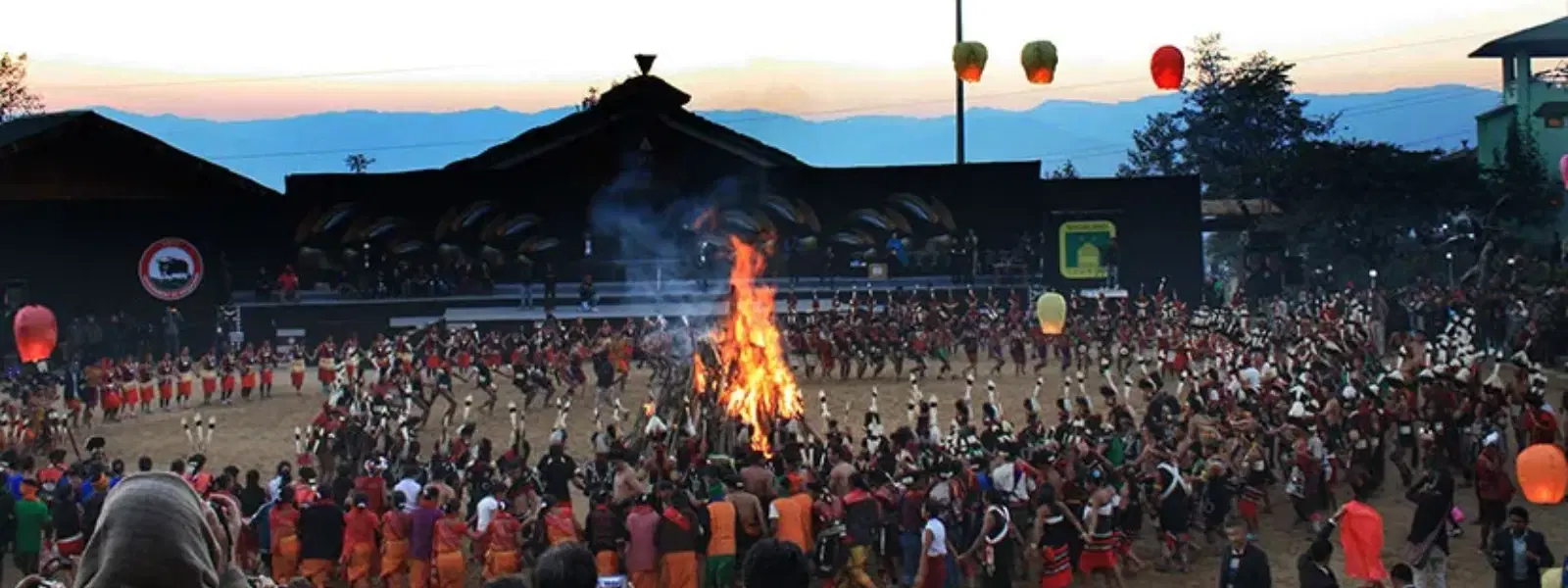
Hotels
•05 min read

Experience the magic of Sikkim during the colorful Pang Lhabsol festival, where vibrant rituals and age-old traditions are celebrated against the breathtaking backdrop of Mount Kanchenjunga. This time-honored festival not only honors Sikkim's sacred heritage but also unites communities in a spiritual tribute to indigenous deities. In this blog, you will learn how to immerse yourself in the Pang Lhabsol festival through a detailed exploration of its history, unique traditions, and practical travel tips for a memorable experience.
Pang Lhabsol, which literally translates to "worship of deities," is a traditional Sikkimese festival that honors local deities and the powerful spirit of unity among the diverse communities. Rooted in ancient Sikkimese sacred traditions, this festival is a vibrant celebration that brings together the fervor of local residents and visitors alike. It represents the core of Sikkim's indigenous deity worship and highlights the collective respect for the divine and natural forces.
Central to the celebration is Mount Kanchenjunga, revered as the guardian deity of Sikkim. The mountain is more than just a natural marvel—it is considered a protector and a source of spiritual strength for the local communities. The indigenous belief interweaves the mountain’s formidable presence with the divine, illustrating a deep-rooted connection to nature and ancestral worship.
The origins of the Pang Lhabsol festival can be traced back to the reign of Chogyal Chakdor Namgyal, when a historic blood treaty sealed the bond between the Lepcha and Bhutia communities. The revered Buddhist saint Lhatsun Chenpo later institutionalized the festival, embedding it firmly within the cultural fabric of Sikkim. Recognized as an emblem of unity and shared heritage, the festival continues to serve as a reminder of past alliances and the spiritual bond that holds the region together.
At the heart of the festival is the ceremonial worship of local deities. The celebration involves intricate offerings, melodious prayers, and resonating chants that fill the air. Buddhist monks play a significant role, conducting ceremonies that bring a sense of sanctity and order to the festivities. These rituals not only invoke blessings but also serve as a reflection of Sikkim's deep-seated cultural and spiritual values.
One of the festival's most captivating aspects is the Chaam or warrior dance. Performed in elaborate, colorful masks and vibrant costumes, this dance symbolizes the might and vigilance of the guardian deity. With each graceful step and dynamic movement, dancers bring to life age-old legends and fortify the spiritual aura of the festival. The intricate choreography of the Chaam dance makes it a visual spectacle, capturing the essence of protection and valor that is central to Sikkimese traditions.
Pang Lhabsol is much more than a series of rituals—it is a celebration of community spirit. Bhutia, Lepcha, and other local communities come together in an atmosphere of joy, sharing festive feasts, storytelling sessions, and folklore recitations. This communal participation not only elevates the festival's cultural charm but also strengthens the bonds between people, preserving a shared legacy that transcends generations.

Pang Lhabsol is celebrated according to the lunar calendar, usually falling in August or September. This timing is significant as it coincides with the harvest season, adding an extra layer of meaning and abundance to the festivities. The season’s natural beauty and the agricultural celebrations perfectly complement the spiritual and cultural dimensions of the festival.
For an immersive experience, visitors should consider traveling to key locations such as Gangtok and Tsuklakhang Monastery, among others. These sites not only offer a front-row seat to the festival's events but also expose travelers to the rich tapestry of Sikkim’s cultural and spiritual heritage. Navigating these sacred sites is simple, with local transport options designed to ensure you reach these remarkable spots with ease.
While steadfast in tradition, the Pang Lhabsol festival has evolved to include elements that resonate with contemporary audiences without compromising its historical roots. The Sikkimese government, along with local communities, continuously works to preserve this unique cultural heritage while subtly integrating modern practices. This balance ensures that the festival remains both authentic and accessible for today’s travelers.
Today, Pang Lhabsol stands as a powerful symbol of unity, peace, and environmental respect in Sikkim. The festival has grown into a significant cultural event that promotes tourism and spreads awareness about the importance of indigenous deity rituals. By celebrating the age-old traditions of Mount Kanchenjunga worship, locals and visitors alike contribute to a legacy that reflects both historical reverence and modern-day values.
Did You Know? The Pang Lhabsol festival is one of the few cultural events in the world that uniquely blends Buddhist rituals with indigenous deity worship, showcasing Sikkim's harmonious coexistence of diverse traditions.
To truly absorb the spirit of the festival, immerse yourself in every facet of the celebration. Attend the elaborate deity worship sessions, take a moment to appreciate the graceful movements of the Chaam dance, and interact with locals who are often eager to share the history and significance of their customs. Always approach these rituals with respect, ensuring that your participation honors the cultural and spiritual essence of the festival.

When packing for your journey, consider Sikkim's variable weather. Lightweight layers are ideal as the mornings can be cool and the afternoons warm. It’s also wise to pack a good pair of walking shoes for visits to sacred sites and navigating hilly terrains. Along with these essentials, be mindful of photography etiquette; always seek permission before capturing images of ceremonies or locals in their traditional attire.
Another meaningful way to participate is by supporting local artisans and craftspeople. Purchasing traditional crafts not only serves as a beautiful memento of your journey but also contributes to the sustainability of Sikkim’s cultural heritage. Your support helps preserve the vibrant traditions of this region, ensuring that festivals like Pang Lhabsol continue to thrive in both spirit and authenticity.
The festival honors Mount Kanchenjunga as the guardian deity of Sikkim and celebrates unity among communities through rituals and cultural performances.
Mount Kanchenjunga is worshipped as the protector of Sikkim during the Pang Lhabsol festival.
The guardian deity of Sikkim is Mount Kanchenjunga, revered for its protective and spiritual significance in Sikkimese culture.
Lhabsol translates to "worship of deities," reflecting the festival's focus on honoring sacred beings and fostering harmony.
Pang Lhabsol is celebrated to honor Sikkim's guardian deity, commemorate the unity between Lepcha and Bhutia communities, and preserve Sikkim's cultural heritage.
The Pang Lhabsol festival is a vibrant and deeply spiritual celebration that encapsulates the heart of Sikkim. Through its unique blend of deity worship, symbolic dances, and rich communal traditions, the festival not only honors ancient legends and nature but also offers modern travelers an immersive cultural journey. Whether you are a spontaneous wanderer or a meticulous planner, exploring this traditional Sikkimese festival provides an unforgettable glimpse into the region’s sacred traditions and unified heritage.